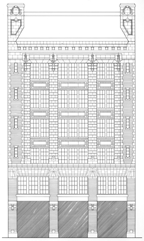With twenty years of experience in architecture, history, and research, I am committed to ensuring the past is celebrated for the rich history it can reveal and for the strong foundation it provides for future generations. Through Stonebridge Learning, my mission is to provide continuing education to everyone involved in the heritage preservation industry—from the interested layperson to the working professional—demystifying the practice of heritage preservation and contributing to a vibrant future in communities across the country.
Through my work within the nonprofit and governmental sectors, I have had amazing opportunities to share my expertise with people researching and preserving historic resources across the country. I led the Minnesota Historical Society’s efforts to serve the historic preservation and local history communities, encouraging all Minnesotans to work together to move history forward. And, as Deputy State Historic Preservation Officer in both Minnesota and in Iowa, my goal was always to help local, state, and federal agencies understand the value of historic resources. Today, I am also blessed to work with the Minnesota Department of Transportation's Cultural Resource Unit, serving as liaison between applicants, agencies, and the general public on federal undertakings.
Earlier in my career, I was an integral part of the cultural resource management and environmental review process, for which I conducted research and architectural history investigations throughout the Upper Midwest and Northern Plains. My survey experience includes both rural and urban settings, with resources that range from ICBM missile silos to high-style architecture.
I am an Associate Member of the American Institute of Architects and meet the Secretary of the Interior’s Professional Qualifications for architectural history, history, and historic architecture [36 CFR Part 61, Appendix A].
 Architectural Layers
Architectural Layers
Just as the earth’s strata show changes to and occupations of the land over time, architecture exhibits a myriad of layering: the newly designed building comprises architectural components fastened together in a certain sequence, an older building with later alterations illustrates the refashioning of our surroundings to fit the latest trends, and modern additions to historic environments show how society adapts to an ever-changing world. Architectural and environmental layers like these are not meant to be erased just to return to some pristine point in time; they should be celebrated for the rich history they can reveal.
